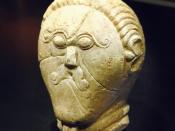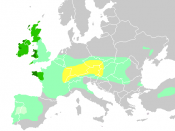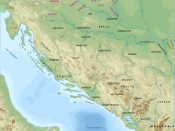The evolution of Celtic mythology
The Celts were a group of tribes spread throughout Europe, comprised of a hierarchy of nobles and warriors, religious leaders known as druids, and peasants or farmers. The Celts arrived in Britain and Ireland around 500 B.C. and within a hundred years had nearly disappeared. In essence, the Celts were more of an influence than they were a culture as they were diverse and often disparate in belief and action. Their discovery of iron enabled them to proliferate in the way in which they did as iron was a much more durable and stronger metal than the commonly used bronze of the time. In general, Celts were ruled by kings and bound by language and customs rather than a centralized government. They suffered a series of defeats by the Roman Empire beginning in 225 B.C. and lost not only significant numbers but also traditions that were important to the culture.
By 84 A.D., the Celts were basically under Roman rule and only a few clusters in Ireland and northern Britain remained free and were able to pass on Celtic culture and traditions.
Like other Iron Age Europeans, the Celts believed in multiple gods before they were converted to Christianity. It is thought that different tribes of Celts believed in different deities and that very few common gods were honored, unlike in Roman or Greek cultures where there were commonly worshipped entities. Hence there was huge disparity and variation in not only the Celtic myths themselves, but also in the way in which they were recounted or passed down. Celtic myths were communicated through oral tradition. These stories were most likely composed by traveling bards and were probably not written down until the 12th century by monks and other scholars. "Celtic storytellers, called poets, were entertainers,


